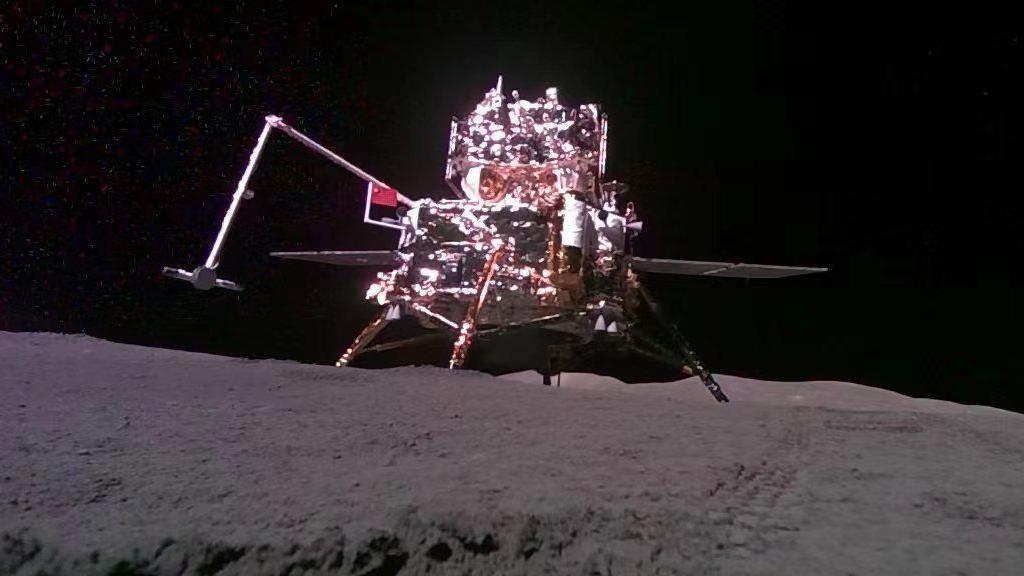China's Moon mission returns to Earth with rare lunar rocks

Chang'e-6 lifted off from the Moon in early June and has now returned home
- Published
It's mission accomplished for China's Chang'e-6 lunar probe, which has safely landed on Earth after a two-month journey to the far side of the Moon and back.
The spacecraft, which didn't have any crew onboard, touched down in the Inner Mongolia desert on Tuesday morning.
It contains some very rare rock and soil samples that were collected after Chang'e-6 landed on the unexplored far side of the Moon.
It's hoped that the Moon rocks will allow scientists to uncover more secrets about how planets are formed.
More stories from space
- Published11 April
- Published22 August 2023
- Published3 April
Chang'e-6 blasted off from the Wenchang Space Launch Center, China, in early May
The successful mission is good news for China, which is increasing the size of its space programme, with the country's President Xi Jinping calling it a "landmark achievement".
It comes nearly four years after the previous Chang'e-5 mission that landed and collected samples on the Moon's near side.
Chang'e-6 faced several risks, with a safe landing on the 'dark side' of the Moon having only been done once before with China's Change-4 probe.
Footage from the mission was shown around China on TV news broadcasts
According to the China National Space Administration (CNSA), Chang'e-6 used a computer system to check for any obstacles that would be in the way of landing, before touching down on the Moon's South Pole-Aitken Basin.
This is a crater on the side of the Moon that always faces away from Earth, an area that's hard to reach because it's really far away and doesn't have many flat surfaces that are easy to land on.
Once there, Chang'e-6 used a drill and a robotic arm to collect soil and rocks from the lunar surface.
It's not yet known how much material the probe managed to bring back down to Earth, but scientists are keen to find out more.
